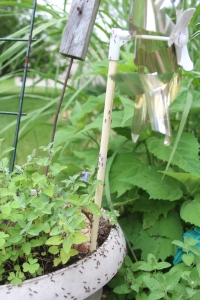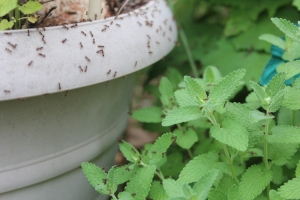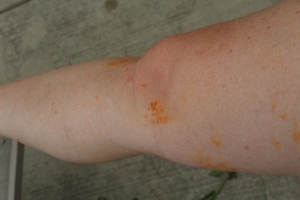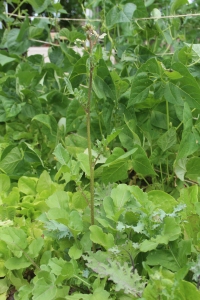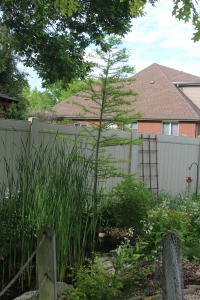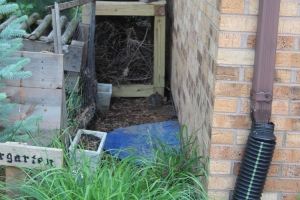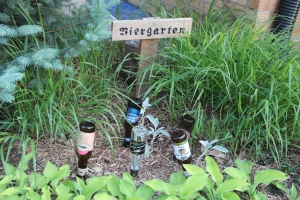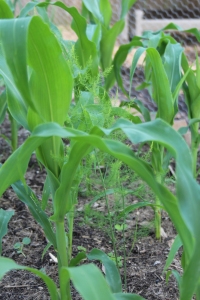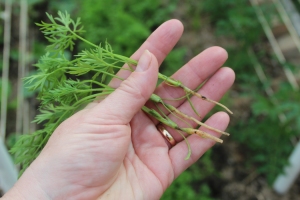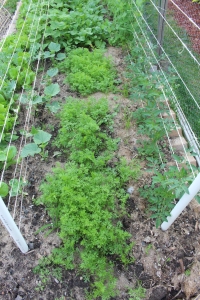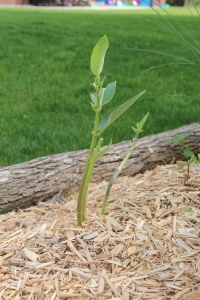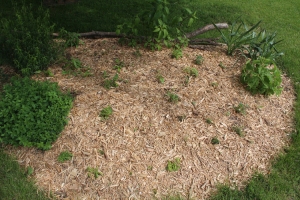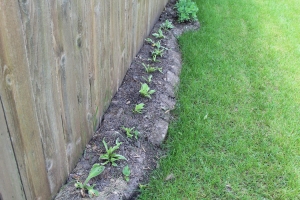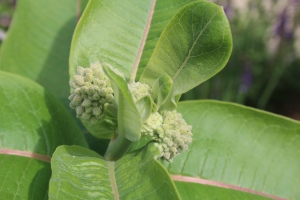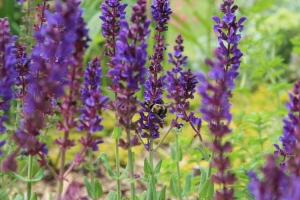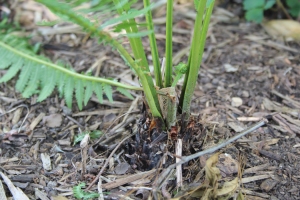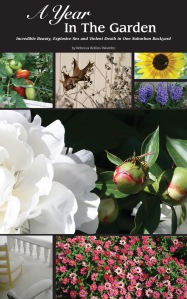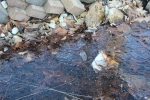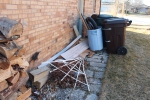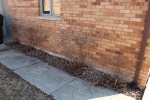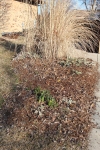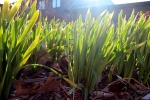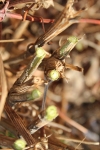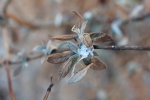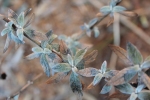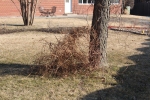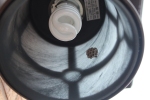Are you following us on Facebook? Lots of fun photos, videos and sharing of gardening information!
While Tony and I listened to “Wait, Wait, Don’t Tell Me” on NPR (our Saturday morning ritual), Griffey suddenly went into attack mode from his seat on the couch. He stood up, looked out of the window and began barking. Because he rarely barks at anything (such a helpful trait in a watchdog, really), we took notice.
We noticed that he was barking at New Neighbor’s little guy, completely ignoring our latest resident baby bunny sitting on the patio, just outside the french doors. The bunny was eating the new grass sprouts, unafraid of the noise and unafraid of me as I made photographs through the glass. He chomped and chewed his way through the leaves, glancing at the “Certified Wildlife Area” sign in perfect comfort.
When I stepped outside to start my day of garden work, he still sat there, hunching into the soft green grass, cautiously optimistic. Then I sneezed and he bolted away, shocked into sudden flight by that loud noise.
First on the list of things-to-do was removing the bolting spinach. “Bolting” is an apropos term, as it does seem to happen quick as lightening. One moment, you are happily cutting sweet, tender spinach for a salad, and, while your back is turned putting the leaves into a colander, the plants have sent up shoots covered in blossoms and seeds, making the spinach bitter and tough.
I pulled out all the plants, retrieved the garden rake and roughed up the soil. From my gardening file drawer, I pulled out the Ziploc bags full of leftover seeds and found the bush beans from last year’s ill-fated Burpee order. My square foot gardening technique recommends four plants per square foot and I pushed the white bean seeds into the ground, keeping to the proper pattern.
My Bauhaus design-trained mind loves the square foot plan. It is much more productive than rows, enabling me to “see” a quilt-like plan with more variety and more possibilities. Our harvest is bigger this year, with every inch of the garden being used effectively.
I pulled some bolting mesclun plants and cut lengths of basil to dry, trimming back any possibility of bloom.
That blackberry bush, while wildly entertaining and delicious, is draping onto the grass and covering up my butterfly bushes, one of which is struggling back from the drought last year. Having already received New Neighbor’s permission (yes, legally what drapes on my yard can be cut by me – but really is unnotified trimming the best way to build a neighborly relationship?), I cut back about 5 branches, careful to keep the symmetry of the shape while eliminating the annoying. Tony is so happy; for once, I didn’t leave the branches there for him to clean up, or drag them next to the house, waiting for him to clean them up. I cut them up and put them into the yard waste bin. Without a grinder, these cannot be composted.
I started digging out whole plants, as my brother- and sister-in-law’s condo is in need of some color and personality. I pulled out six sedum, opening to the air and sun the aloe plants that were getting overwhelmed. I strategically pulled coneflower, foxglove, coreopsis, monardia and oenothera. A clump of red lilies, eaten alive by coneflower, also came out. They were all put in plastic bags (see, that newspaper subscription is so helpful in gardening) and piled on the patio for Sunday’s planting.
An ancient container full of catmint was also full of clover. When I pulled the clover and inserted a pinwheel, the soil in the container simply exploded. As if an evacuation alarm had sounded, ants and ants and ants and more ants suddenly fled from below, covering the soil, covering the catmint, dripping onto the hibiscus, onto my gardening gloves, onto the ground below. There were absolutely thousands of the creatures, each shiny and black and shapely. I was entranced, amused and awed. That container has been hiding this secret for how long? Exactly how many ants made their home here? What was the attraction to this particular pot? Was it the pulling of the clover that disturbed them? Or the sudden drilling of a mine shaft (the pinwheel stem) into their nest?
When I called Tony out to see this wonder, he had a question too – just one. “They’re not coming into the house, are they?”


